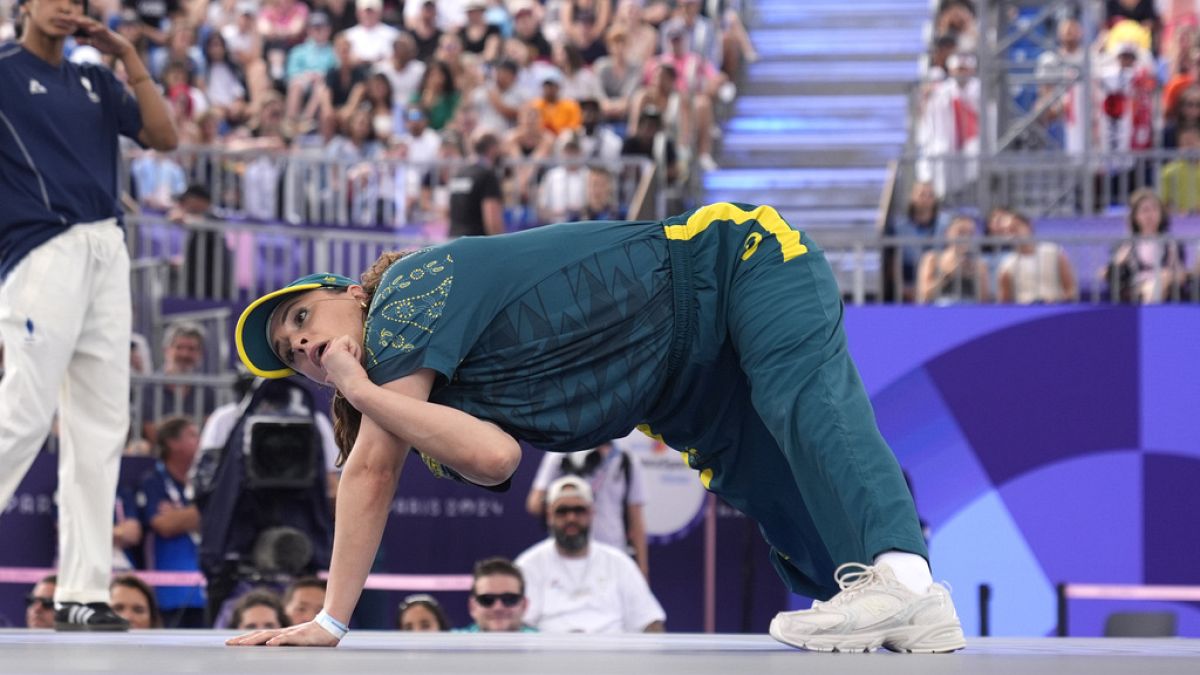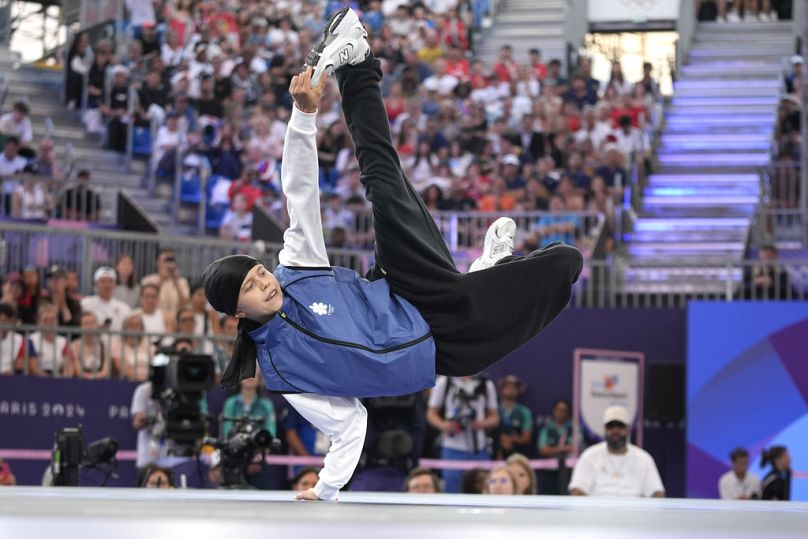"There were significant organisational and governance shortcomings that could have been easily reconciled but, unfortunately, negatively impacted breaking’s first touching point to a new global audience," said breakdancing authorities.
From the Australian b-girl with the meme-worthy “kangaroo” dance move to the silver-medal-winning Lithuanian in a durag, breaking's Olympic debut had a few moments that raised questions from viewers about whether the essence of the hip-hop art form was captured at the Paris Games.
Rachael Gunn, or “Raygun," a 36-year-old professor from Sydney, Australia, quickly achieved internet fame, but not necessarily for Olympic-level skill.
She was swept out of the round-robin stage without earning a single point, and her unconventional moves landed flat while failing to match the skill level of her foes.
At one point, Gunn raised one leg while standing and leaned back with her arms bent toward her ears. At another, while laying on her side, she reached for her toes, flipped over and did it again in a move dubbed “the kangaroo”.
Gunn has a PhD in cultural studies, and her LinkedIn page notes she is “interested in the cultural politics of breaking."
“I was never going to beat these girls on what they do best — their power moves,” said Gunn. “What I bring is creativity.”
Clips of her routine have gone viral on TikTok and elsewhere, and many cringed at her moves platformed on the Olympic stage as a representation of hip-hop and breaking culture.
“It's almost like they are mocking the genre,” wrote one user on X.
Some of it was ‘weird to see’
Many black viewers, in particular, called out Lithuania’s silver medalist b-girl Dominika Banevič, aka "Nicka", for donning a durag during each of her battles.
Durags, once worn by enslaved Africans to tie up their hair for work, are still worn by black people. They became a fashionable symbol of black pride in the 1960s and 1970s and, in the 1990s and early 2000s, a popular element of hip-hop style.
The 17-year-old breaker ultimately won the silver medal after losing in the final to Japan's b-girl Ami, or Ami Yuasa.
For her part, Banevič has credited the breakers from the 1970s in the Bronx — the OGs, or hip-hop's “original gangsters” who created the dance — for her own success and breaking style.
“It’s a huge responsibility to represent and raise the bar every time for breaking because they did an amazing job. Big respect for the OGs and the pioneers that invented all those moves. Without them, it wouldn’t be possible," she said. “Without them, breaking wouldn't be where it is today. So I'm grateful for them.”
Concerns over losing breaking's roots
Friday night’s slips “may have alienated too many new viewers to garner the anticipated response from our Olympic premiere,” said Zack Slusser, vice president of Breaking for Gold USA and USA Dance.
“We need to change the narrative from yesterday’s first impression of breaking as Olympic sport. There were significant organisational and governance shortcomings that could have been easily reconciled but, unfortunately, negatively impacted Breaking’s first touching point to a new global audience.”
The challenge for Olympic organisers was to bring breaking and hip-hop culture to a mass audience, including many viewers who were sceptical about the dance form’s addition to the Olympic roster.
Others feared the subculture being co-opted by officials, commercialised and put through a rigid judging structure, when the spirit of breaking has been rooted in local communities, centred around street battles, cyphers and block parties.
Hip-hop was born as a youth culture within black and brown communities in the Bronx as a way to escape strife and socio-economic struggles and make a statement of empowerment at a time when they were labelled as lost, lawless kids by New York politicians.













